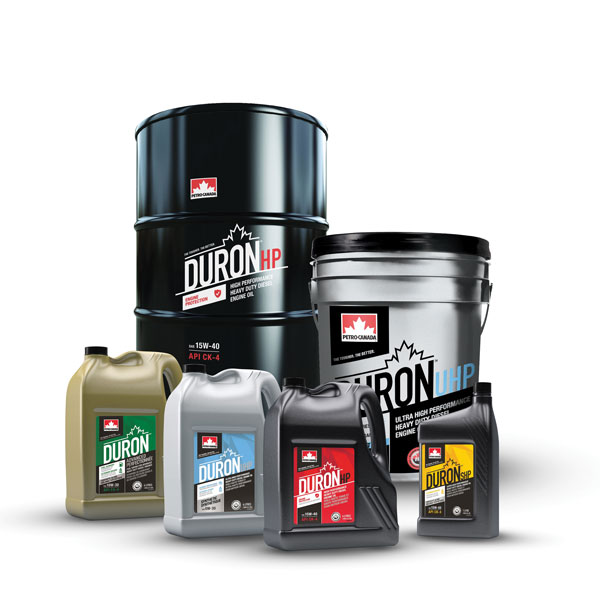Used oil analysis is an essential component of a proactive approach to maintenance. By being able to analyze used oil analysis data, waste fleet operators can be better informed and predict their fleet’s maintenance needs and spot issues earlier on before they become serious.
By Darryl Purificati
For waste fleet operators looking to reduce the unplanned downtime and maintenance costs of their fleet, a proactive maintenance schedule that incorporates a robust used oil analysis program is key. A vital tool, used oil analysis can identify signs of mechanical failure early, before it becomes too serious or expensive to repair, and help predict future maintenance needs of a vehicle.
A Simple Three Step Process
The engine oil is like the lifeblood of a heavy-duty engine. Used oil analysis is therefore akin to preventative medicine or health monitoring, returning data that allows operators to identify potential areas for concern or issues with the overall condition of the engine.
There are three stages to the used oil analysis process: 1) taking a representative sample of the oil, 2) sending it to a qualified used oil analysis laboratory, and 3) interpreting and acting upon the recommendations of the results.
When analyzing the results of used oil analysis data, technical lubricant experts can identify trends that are established over time to help determine when and where maintenance costs are likely to arise. This can better inform maintenance schedules and reduce unplanned downtime and breakdowns. For example, a regular and robust used oil analysis program can offer the potential to safely extend oil drain intervals*, which provides waste fleets with the opportunity to keep their vehicles operational for longer intervals between scheduled maintenance and reduce maintenance costs.

Taking a Closer Look at the Data
When interpreting used oil analysis data, lubricant experts and technical service advisors can offer their detailed knowledge, insight and experience to help fleets read and act upon the report findings. However, it is also useful for waste fleet operators to be able to read and understand what the report data could mean for the fleet.
Waste fleet operators know their equipment and the demands placed on it. For example, they will be aware when it will be under more pressure, which would require the engine to be at optimal performance. By being able to quickly identify potential trends and anomalies in used oil analysis data, maintenance schedules can be updated and urgent issues addressed as quickly as possible.
The first factor to consider when interpreting used oil analysis data, particularly when operating a mixed fleet, is that not all Original Equipment Manufacturer (OEM) thresholds are the same for specific properties. This is key when report reading across a number of
vehicles as a reading in one may be significant, while in another could be deemed acceptable. Always check for specific requirements with your OEM.
There are also common anomalies to look out for. For example, if coolant or glycol is found in the engine oil, it could be a sign of a failing EGR cooler seal. This would need immediate attention from a mechanic and potentially an oil change. Early signs of an EGR cooler seal failure include the presence of potassium or sodium, so these are key properties to monitor.
A failing camshaft, coolant attacking the liners or the engine needing mechanical adjustment can all be indicated by an increase in wear metals such as iron and aluminum. By spotting these signs early, smaller and more affordable maintenance tasks can be undertaken before the problems become too serious or expensive.
The presence of unburnt fuel alongside an increase in common wear metals (iron, aluminum, lead and copper) are also important anomalies to look for, as together, this could be a sign that the protection of vital engine components is compromised. If this is shown on a used oil analysis report, seek advice and contact an expert lubricant technical advisor immediately.
An Essential Component
Used oil analysis is an essential component of a proactive approach to maintenance. By being able to analyze used oil analysis data, waste fleet operators can be better informed and predict their fleet’s maintenance needs and spot issues earlier on before they become serious. This can effectively reduce waste fleet maintenance costs and unplanned downtime, helping to keep the fleet operational for a longer period of time. | WA
Darryl Purificati, Sr. is Technical Advisor for OEM/Automotive at HollyFrontier Lubricants & Specialties, which includes the Petro-Canada Lubricants brand. He has 27 years of experience working in the oil and energy sector as a technical advisor. He joined Petro-Canada in 1994 to support its lubricants business and the Petro-Canada Lubricants brand (later acquired by Suncor Energy in 2009) from Ryerson University, where he graduated with a Bachelor of Science (Hon) in Applied Chemistry. In 2017, Petro-Canada Lubricants was acquired by HollyFrontier and is part of the Lubricants and Specialties segment, where Darryl continues to provide technical expertise. He has successfully undertaken various roles including Lubricants Research and Development, OEM Sales, Fuels Quality and Technical Services. Since 2012, Darryl’s expertise has been used across the industry in his role as industry liaison and technical advisor for OEM and driveline products. Darryl is also widely involved within the industry as an active member of the American Petroleum Institute, ASTM International and the Society of Automobile Engineers. For more information, visit https://lubricants.petro-canada.com/en-gb.
*Extending drain intervals should always be undertaken in conjunction with an oil analysis program.
